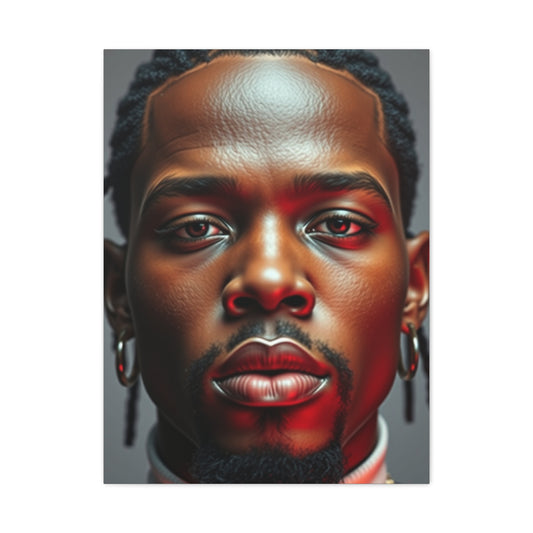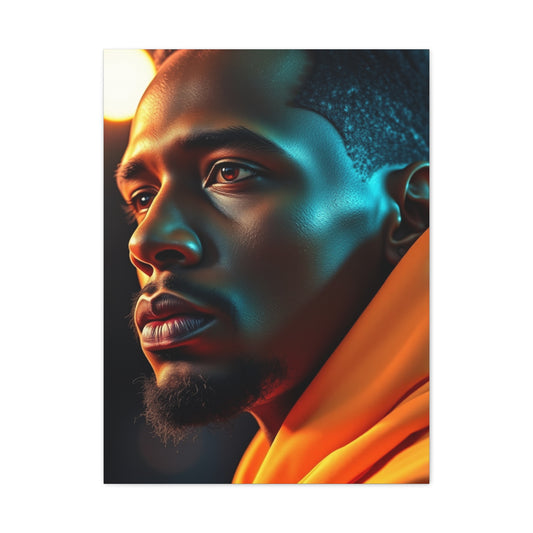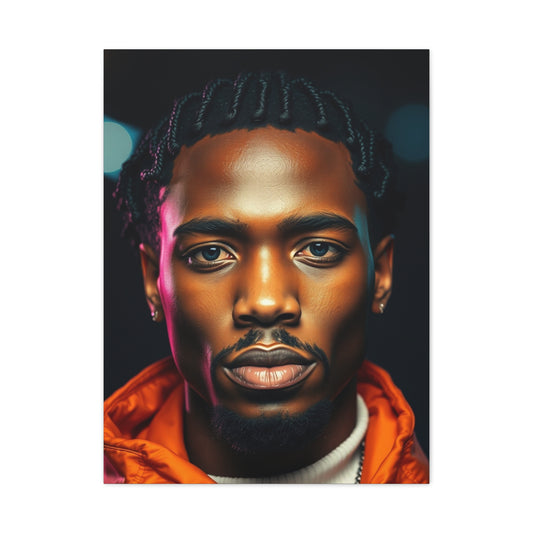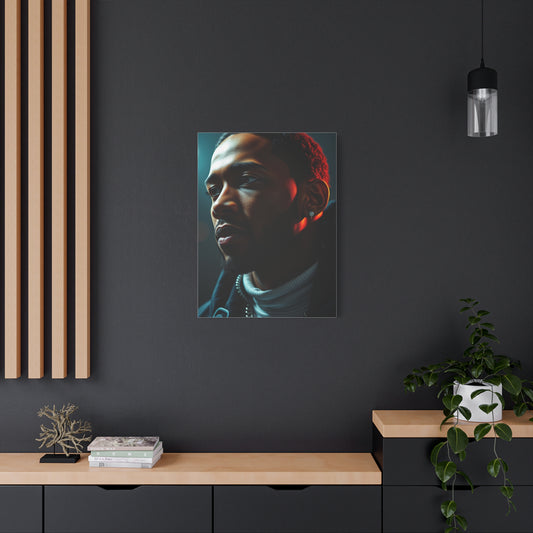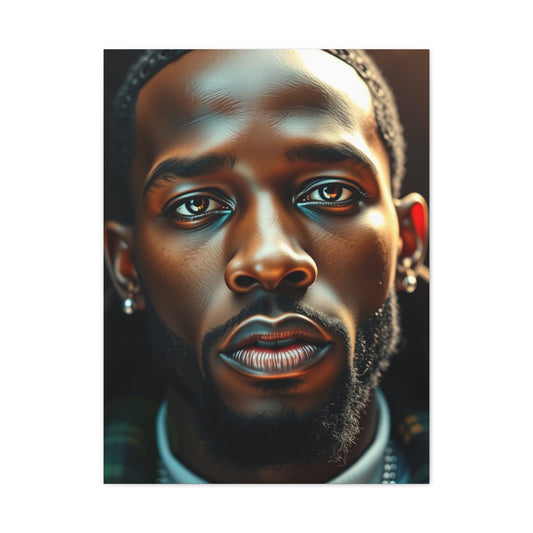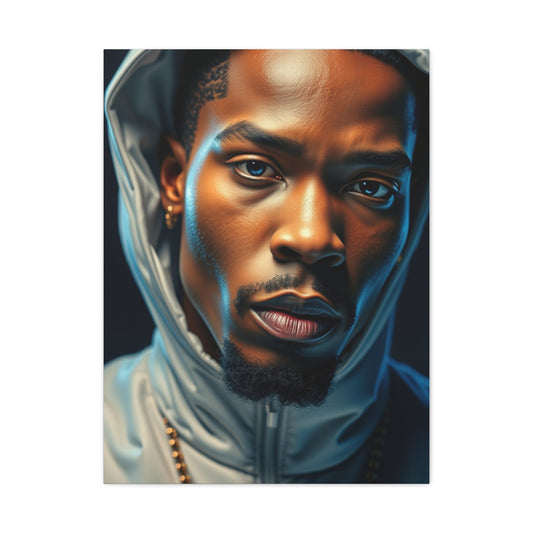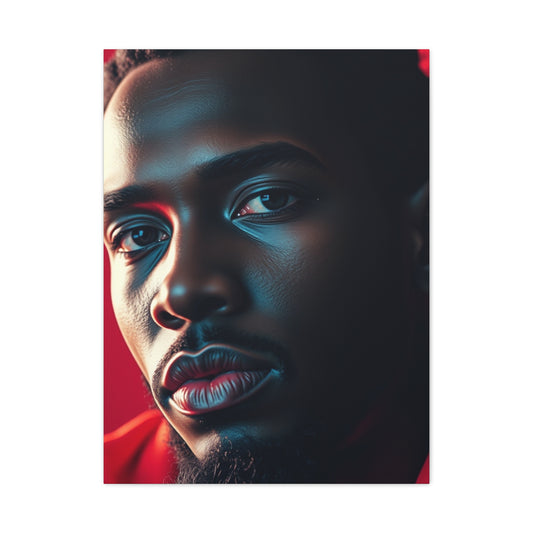-
Vision Frank Ocean Art Art Wall Art & Canvas Print
Regular price From $141.23 USDRegular priceUnit price per -
Frank Ocean Art Supreme Canvas Wall Art & Canvas Print
Regular price From $141.23 USDRegular priceUnit price per -
Elite Frank Ocean Art Vision Wall Art & Canvas Print
Regular price From $141.23 USDRegular priceUnit price per -
Frank Ocean Art Supreme Gallery Wall Art & Canvas Print
Regular price From $141.23 USDRegular priceUnit price per -
Collection Frank Ocean Art Art Wall Art & Canvas Print
Regular price From $141.23 USDRegular priceUnit price per -
Frank Ocean Art Refined Canvas Wall Art & Canvas Print
Regular price From $141.23 USDRegular priceUnit price per -
Frank Ocean Art Luxury Canvas Wall Art & Canvas Print
Regular price From $141.23 USDRegular priceUnit price per -
Supreme Frank Ocean Art Collection Wall Art & Canvas Print
Regular price From $141.23 USDRegular priceUnit price per -
Masterpiece Frank Ocean Art Vision Wall Art & Canvas Print
Regular price From $141.23 USDRegular priceUnit price per
Frank Ocean Wall Art to Infuse Music and Style Into Any Room
In the realm of contemporary interior design, few artistic movements have captured the imagination quite like the convergence of musical inspiration and oceanic aesthetics. The mesmerizing allure of Frank Ocean's artistic vision has transcended the boundaries of sound, manifesting itself in stunning visual representations that transform living spaces into sanctuaries of creative expression. This comprehensive exploration delves deep into the world of music-inspired wall décor, where the ethereal qualities of ocean imagery merge seamlessly with the profound emotional resonance of one of music's most enigmatic figures.
The phenomenon of transforming musical artistry into visual masterpieces represents a fascinating intersection of multiple creative disciplines. When we examine the landscape of contemporary wall art, we discover that the integration of musical themes with natural elements creates a uniquely powerful aesthetic language. The oceanic motifs that permeate this artistic movement speak to something fundamental within the human psyche—our innate connection to both the vastness of water and the infinite possibilities of musical expression.
Understanding the cultural significance of this artistic movement requires us to consider the broader context of how music influences visual creativity. The atmospheric qualities inherent in certain musical compositions naturally lend themselves to visual interpretation, creating opportunities for artists to explore themes of depth, emotion, and transcendence through their work. This symbiotic relationship between auditory and visual art forms has given rise to a distinctive genre that continues to evolve and inspire.
Aesthetic Philosophy Behind Music-Inspired Ocean Canvas Art
The artistic philosophy underlying music-inspired oceanic wall art encompasses a complex interplay of symbolic elements that resonate with contemporary sensibilities. This aesthetic movement draws inspiration from the fluid, ever-changing nature of both water and sound, creating visual narratives that speak to the ephemeral qualities of human experience. The color palettes employed in these works often mirror the subtle gradations found in ocean environments—from the deep indigos of midnight waters to the ethereal turquoise of shallow lagoons.
Contemporary artists working within this genre demonstrate remarkable sensitivity to the emotional undertones that characterize influential musical compositions. They understand that successful translation from auditory to visual medium requires more than mere illustration; it demands a deep comprehension of the psychological landscapes that music creates within the listener's consciousness. This understanding manifests in artwork that captures not just the surface aesthetics of oceanic imagery, but the profound emotional depths that such environments represent.
The philosophical foundations of this artistic movement also encompass themes of introspection and contemplation. Just as the ocean serves as a metaphor for the unconscious mind in various cultural traditions, music-inspired oceanic art invites viewers to embark on journeys of self-discovery. The interplay between the vastness of maritime landscapes and the intimacy of personal musical experiences creates a unique emotional resonance that distinguishes this genre from other forms of contemporary wall décor.
Technical mastery plays a crucial role in the successful execution of these artistic visions. Artists must possess not only traditional skills in composition and color theory but also an intuitive understanding of how musical rhythms can be translated into visual patterns. The most successful pieces in this genre demonstrate a sophisticated grasp of how texture, layering, and tonal variation can create visual equivalents to the complex sonic landscapes found in contemporary music.
Contemporary Canvas Techniques for Music Legend Portrait Artwork
The evolution of canvas printing technology has revolutionized the way we approach music-inspired wall art, enabling artists to achieve unprecedented levels of detail and color accuracy in their reproductions. Modern printing techniques allow for the subtle gradations and atmospheric effects that are essential to capturing the essence of oceanic imagery while maintaining the emotional intensity associated with musical inspiration. These technological advances have democratized access to high-quality artistic reproductions, making it possible for enthusiasts to incorporate museum-quality artwork into their personal spaces.
Digital manipulation and enhancement techniques play an increasingly important role in the creation of contemporary music-inspired wall art. Artists can now seamlessly blend photographic elements with hand-painted textures, creating hybrid works that combine the precision of digital art with the organic qualities of traditional media. This fusion of techniques enables the creation of pieces that capture both the technical perfection often associated with contemporary music production and the raw emotional energy that characterizes authentic artistic expression.
The substrate selection process for music-inspired canvas art requires careful consideration of how different materials interact with various printing techniques and display environments. High-quality cotton canvases provide the ideal foundation for reproducing the subtle tonal variations essential to oceanic imagery, while synthetic alternatives offer enhanced durability and color retention over time. The choice of substrate significantly impacts the final appearance of the artwork, influencing factors such as texture, light reflection, and overall visual impact.
Finishing techniques for music-inspired canvas art have evolved to incorporate protective coatings that preserve color vibrancy while enhancing the tactile qualities of the finished piece. These treatments not only extend the lifespan of the artwork but also contribute to the overall aesthetic experience by adding depth and luminosity to the printed surface. The application of specialized varnishes and protective films ensures that the subtle color transitions characteristic of oceanic imagery remain stable under various lighting conditions.
Moody Atmospheric Canvas Designs That Capture Musical Essence
The creation of atmospheric canvas designs that successfully capture the essence of influential musical compositions requires a deep understanding of how color psychology intersects with emotional storytelling. Artists working in this genre must master the art of suggestion, creating visual narratives that evoke specific emotional responses without relying on literal representation. The most effective pieces in this category achieve a delicate balance between abstraction and recognition, allowing viewers to project their own musical memories onto the visual experience.
Color temperature manipulation serves as one of the most powerful tools available to artists seeking to recreate the emotional landscapes of contemporary music. Cool blues and greens evoke the introspective qualities often found in contemplative musical compositions, while warmer tones can suggest the passion and intensity of more emotionally charged pieces. The strategic use of color temperature gradients creates depth and movement within the composition, mimicking the dynamic range characteristic of sophisticated musical arrangements.
Texture application techniques in atmospheric canvas art serve multiple purposes, from creating visual interest to enhancing the emotional impact of the piece. Artists employ various methods to achieve textural effects that complement the oceanic themes central to this genre. Layering techniques, impasto applications, and mixed-media approaches all contribute to the creation of surfaces that invite tactile exploration while supporting the overall visual narrative.
The composition of atmospheric canvas designs requires careful consideration of focal points and visual flow. Successful pieces guide the viewer's eye through the composition in a manner that mirrors the temporal progression of musical pieces. This might involve the use of leading lines that suggest the movement of water or the gradual revelation of compositional elements that parallel the development of musical themes throughout a song or album.
Lighting considerations play a crucial role in the effective display of atmospheric canvas art. The interplay between ambient lighting and the reflective qualities of the canvas surface can dramatically alter the perceived mood and emotional impact of the piece. Artists must consider how their work will appear under various lighting conditions, ensuring that the essential atmospheric qualities remain intact regardless of the viewing environment.
Lyrical Interpretation Through Visual Artistic Expression
The translation of lyrical content into visual form represents one of the most challenging and rewarding aspects of music-inspired wall art. This process requires artists to identify the core emotional and thematic elements within lyrical compositions and develop visual vocabularies capable of expressing these concepts without relying on direct textual representation. The most successful interpretations capture not just the literal meaning of lyrics but the emotional subtext and cultural associations that give them their power.
Symbolic representation techniques allow artists to create visual narratives that resonate with the deeper meanings embedded within influential musical compositions. These symbols might draw from natural imagery, abstract forms, or cultural references that enhance the viewer's understanding of the underlying themes. The effective use of symbolism requires a sophisticated understanding of both the source material and the cultural context within which it will be displayed.
Color coding and tonal mapping provide additional layers of meaning in lyrical interpretation artwork. Artists can assign specific colors or tonal qualities to recurring themes within the source material, creating visual consistency that helps viewers navigate the emotional landscape of the piece. This technique proves particularly effective when working with complex musical compositions that explore multiple themes or emotional states throughout their duration.
The temporal aspect of musical compositions presents unique challenges when translating them into static visual media. Artists must find ways to suggest the passage of time and the evolution of themes within the confines of a single image. This might involve the use of sequential elements, gradual transitions, or compositional techniques that imply movement and change even within a static frame.
Abstract expressionist techniques offer powerful tools for capturing the emotional essence of lyrical content without resorting to literal illustration. These approaches allow artists to work with pure color, form, and texture to create visual experiences that parallel the emotional journey of the source material. The resulting artwork often achieves a level of emotional resonance that would be impossible through more representational approaches.
Minimal Design Principles in Ocean-Themed Music Canvas
The application of minimalist design principles to ocean-themed music canvas art creates opportunities for profound artistic expression through the strategic use of restraint and focus. This approach recognizes that sometimes the most powerful artistic statements emerge from what is left unsaid rather than what is explicitly depicted. Minimalist ocean-themed canvas art achieves its impact through the careful selection and arrangement of essential elements that capture the essence of both oceanic and musical inspiration.
Negative space utilization forms a cornerstone of effective minimalist design in this context. The strategic use of empty areas within the composition creates breathing room that allows the essential elements to achieve maximum impact. This technique mirrors the use of silence and space within musical compositions, creating visual rhythms that complement the temporal aspects of the source material.
Color reduction techniques in minimalist ocean-themed art focus on achieving maximum emotional impact through the use of carefully selected color palettes. Rather than attempting to recreate the full spectrum of oceanic colors, artists working in this style identify the essential hues that capture the emotional core of their subject matter. This reductive approach often results in more powerful and memorable visual experiences.
Geometric simplification allows artists to distill complex oceanic forms into their essential structural components. This process requires a deep understanding of the underlying patterns and rhythms that characterize natural water formations, enabling the creation of simplified representations that maintain the essential character of the source material while achieving the clarity and focus characteristic of minimalist design.
Typography integration in minimal music-inspired canvas art requires extraordinary restraint and precision. When textual elements are included in these compositions, they must be carefully selected and positioned to enhance rather than overwhelm the visual narrative. The most effective examples of typographic integration achieve perfect harmony between textual and visual elements, creating unified compositions that speak with a single, clear voice.
Artistic Poster Design Elements for Music-Inspired Wall Décor
The development of effective poster design elements for music-inspired wall décor requires a comprehensive understanding of both graphic design principles and the specific aesthetic requirements of contemporary interior spaces. Unlike traditional poster art, music-inspired wall décor must function effectively as both standalone artistic statements and integral components of broader interior design schemes. This dual functionality demands a sophisticated approach to composition, color selection, and thematic development.
Hierarchy establishment through visual weight distribution ensures that music-inspired poster designs communicate their intended messages clearly and effectively. Primary focal points must be established through strategic use of size, contrast, and positioning, while secondary elements provide supporting information and atmospheric enhancement. This hierarchical approach prevents visual confusion and guides viewers through the intended narrative sequence.
Color harmony considerations in music-inspired poster design extend beyond simple aesthetic preferences to encompass psychological and emotional factors. Colors must be selected not only for their visual appeal but also for their ability to evoke the specific emotional responses associated with the source musical material. This requires a deep understanding of color psychology and its intersection with musical emotional expression.
Compositional balance in poster design for music-inspired wall décor involves the strategic distribution of visual elements to create stable, harmonious arrangements that support extended viewing. Unlike advertising posters designed for brief attention spans, decorative poster art must maintain visual interest over extended periods while avoiding visual fatigue or monotony.
Scale considerations play a crucial role in the effective design of music-inspired poster art intended for wall display. Elements must be sized appropriately for the intended viewing distance and display context, ensuring that important details remain visible and impactful when viewed from typical room distances. This requires careful planning and often multiple design iterations to achieve optimal results.
Chillwave Aesthetic Integration in Contemporary Wall Styling
The chillwave aesthetic represents a fascinating synthesis of nostalgic electronic music elements and contemporary visual design principles, creating opportunities for unique wall styling approaches that resonate with modern sensibilities while maintaining connections to established artistic traditions. This aesthetic movement draws inspiration from the dreamlike qualities characteristic of chillwave music, translating them into visual experiences that enhance contemporary living spaces.
Retro-futuristic color palettes form the foundation of effective chillwave aesthetic integration in wall styling. These carefully curated color schemes typically feature combinations of muted pastels, sunset gradients, and neon accents that evoke the nostalgic qualities central to the chillwave movement. The successful application of these palettes requires sophisticated understanding of how color relationships change under different lighting conditions and viewing contexts.
Texture layering techniques in chillwave-inspired wall art create the visual equivalent of the complex sonic layering characteristic of the musical genre. Multiple transparent and semi-transparent layers build up to create rich, complex surfaces that reward close examination while maintaining overall coherence when viewed from a distance. This approach mirrors the production techniques commonly employed in chillwave music composition.
Gradient application methods in chillwave aesthetic wall styling require precise control over color transitions to achieve the smooth, dreamy effects that define the visual language of this movement. Digital printing technologies enable the reproduction of subtle gradient effects that would be difficult or impossible to achieve through traditional artistic methods, opening up new possibilities for creative expression.
Nostalgic element incorporation involves the strategic inclusion of visual references that evoke specific time periods or cultural associations relevant to the chillwave aesthetic. These elements must be integrated seamlessly into the overall composition to avoid creating jarring anachronisms that might disrupt the intended atmospheric effects.
Iconic Music Canvas Art and Its Cultural Significance
The cultural significance of iconic music canvas art extends far beyond mere decoration, encompassing broader questions about how we preserve and celebrate musical heritage in visual form. This art form serves as a bridge between auditory and visual culture, creating opportunities for continued engagement with influential musical works even in contexts where direct musical reproduction might be impractical or inappropriate.
Cultural preservation through visual art provides a mechanism for maintaining connections to important musical movements and individual artists across generational boundaries. Visual representations of musical themes and personalities create tangible connections to intangible cultural achievements, ensuring that important artistic contributions remain visible and accessible to future generations.
Cross-media influence patterns in iconic music canvas art reveal the complex ways in which different artistic disciplines inform and enrich each other. The visual interpretation of musical themes often generates new insights into the source material, while simultaneously creating independent artistic works that contribute to the broader cultural conversation about art, music, and meaning.
Collectibility factors in iconic music canvas art reflect the growing recognition of these works as legitimate artistic achievements worthy of preservation and investment. The limited edition nature of many high-quality music-inspired canvas pieces, combined with their cultural significance, creates market dynamics that support continued artistic production and innovation within the genre.
Educational value considerations highlight the potential for iconic music canvas art to serve pedagogical functions, introducing viewers to important musical works and cultural movements through visual engagement. This educational dimension adds layers of meaning and purpose to decorative applications, creating opportunities for meaningful cultural transmission through aesthetic experience.
Pop Art Techniques in Music-Inspired Visual Design
The application of pop art techniques to music-inspired visual design creates dynamic, engaging artwork that speaks directly to contemporary cultural sensibilities while maintaining connections to established artistic traditions. Pop art's emphasis on bold colors, graphic simplification, and cultural commentary provides an ideal framework for exploring the intersection of musical and visual expression in contemporary contexts.
Color saturation manipulation in pop art-inspired music design utilizes intense, artificial-looking colors to create immediate visual impact and emotional engagement. These saturated color palettes often employ complementary color relationships to create vibrating visual effects that mirror the energy and intensity characteristic of influential musical compositions.
Graphic simplification techniques distill complex musical themes and personalities into their essential visual components, creating instantly recognizable imagery that functions effectively across multiple scales and applications. This reductive approach requires sophisticated understanding of the core elements that make musical figures and themes immediately identifiable to viewers.
Commercial art integration acknowledges pop art's roots in advertising and commercial design, incorporating techniques and aesthetic approaches drawn from these fields to create music-inspired artwork that communicates clearly and effectively with contemporary audiences. This commercial sensibility ensures that the resulting artwork remains accessible and engaging rather than overly academic or esoteric.
Cultural commentary layers in pop art-inspired music design often address broader questions about celebrity, authenticity, and cultural value in contemporary society. These subtextual elements add depth and sophistication to apparently simple visual presentations, creating opportunities for extended contemplation and discussion.
Color Palette Psychology in Ocean Mood Wall Décor
The psychological impact of color selection in ocean mood wall décor represents a crucial consideration for artists and interior designers seeking to create specific emotional experiences within residential and commercial spaces. Color psychology research demonstrates clear connections between specific hues and emotional responses, providing a scientific foundation for artistic decision-making in this context.
Blue spectrum variations in ocean-themed wall décor encompass an extensive range of psychological associations, from the calming effects of pale powder blues to the mysterious depths suggested by midnight navy tones. Each variation within the blue spectrum carries distinct emotional connotations that must be carefully considered in relation to the intended use environment and desired psychological impact.
Temperature balance considerations involve the strategic use of warm and cool color relationships to create dynamic visual experiences that avoid monotony while maintaining overall thematic coherence. The strategic introduction of warm accent colors within predominantly cool ocean-themed palettes can create focal points and prevent the emotional flatness that might result from monochromatic approaches.
Seasonal adaptation techniques enable ocean mood wall décor to remain relevant and engaging throughout changing environmental conditions and seasonal cycles. Color palettes can be selected or adjusted to complement natural lighting variations and seasonal color changes, ensuring continued effectiveness and relevance over extended time periods.
Cultural color associations vary significantly across different demographic groups and geographic regions, requiring careful consideration of the intended audience when developing color palettes for ocean mood wall décor. Colors that evoke positive oceanic associations in one cultural context might carry entirely different connotations in another, necessitating research and sensitivity in color selection processes.
Stylish Music Canvas Integration with Interior Design Trends
The successful integration of stylish music canvas art with contemporary interior design trends requires sophisticated understanding of both current aesthetic movements and timeless design principles. This integration process involves careful consideration of scale, color relationships, thematic coherence, and functional requirements within the broader context of contemporary living spaces.
Trend analysis in contemporary interior design reveals cyclical patterns that smart collectors and designers can anticipate and leverage in their music canvas selections. Understanding these cycles enables the selection of pieces that will remain relevant and visually appealing even as specific trends evolve and change over time.
Scale relationships between music canvas art and surrounding design elements play crucial roles in determining the overall success of interior integration efforts. Properly scaled artwork enhances the proportional relationships within a space, while incorrectly scaled pieces can disrupt visual harmony and create uncomfortable spatial dynamics.
Color coordination strategies must account for both existing design elements and potential future modifications to the interior environment. Successful music canvas integration often involves the selection of pieces that can adapt to evolving color schemes and design modifications without losing their effectiveness or relevance.
Lighting interaction considerations encompass both natural and artificial lighting sources and their impact on the perceived color and mood of music canvas artwork. Different lighting conditions can dramatically alter the appearance and emotional impact of canvas pieces, requiring careful planning and sometimes specialized lighting solutions to achieve optimal results.
Ocean Portrait Canvas
The technical specifications governing modern ocean portrait canvas production encompass a complex array of factors that directly impact the quality, longevity, and visual effectiveness of the finished artwork. These specifications address everything from substrate selection and printing techniques to finishing treatments and display considerations, ensuring that contemporary ocean portrait canvas art meets the exacting standards expected by today's discerning collectors and enthusiasts.
Resolution requirements for modern ocean portrait canvas printing have evolved significantly with advances in digital imaging technology. Current industry standards typically require minimum resolutions of 300 dots per inch at the intended display size to ensure adequate detail reproduction and prevent visible pixelation when viewed at normal distances. Higher resolution requirements may apply for large-format pieces intended for close viewing or for artwork incorporating intricate textural details.
Color space considerations in ocean portrait canvas production involve the selection of appropriate color profiles that accurately reproduce the subtle tonal variations characteristic of oceanic imagery. Wide-gamut color spaces such as Adobe RGB or ProPhoto RGB provide the extended color ranges necessary to capture the full spectrum of blues, greens, and related hues found in ocean-themed artwork.
Substrate quality standards for modern ocean portrait canvas encompass factors such as cotton content, weave density, primer application, and dimensional stability. High-quality cotton canvases with acid-free priming provide the ideal foundation for archival-quality reproductions, while synthetic alternatives offer enhanced durability in challenging environmental conditions.
Ink formulations used in contemporary ocean portrait canvas printing employ pigment-based systems that provide superior lightfastness and color stability compared to dye-based alternatives. These advanced ink systems ensure that the subtle color transitions and atmospheric effects characteristic of ocean portrait art remain stable over extended display periods.
Music Icon Wall Style Evolution
The evolution of music icon wall style reflects broader changes in visual culture, technology, and social attitudes toward musical celebrity and artistic expression. This evolutionary process encompasses shifts in aesthetic preferences, production techniques, and cultural significance that continue to shape contemporary approaches to music-inspired wall décor.
Historical development patterns in music icon wall art reveal clear connections to broader art historical movements, from the pop art innovations of the 1960s through contemporary digital art techniques. Understanding these historical connections provides valuable context for appreciating current developments and anticipating future directions in the field.
Technological influence on music icon wall style evolution encompasses advances in printing technology, digital image manipulation, and display technologies that have expanded creative possibilities while reducing production costs. These technological developments have democratized access to high-quality music-inspired artwork while enabling new forms of creative expression.
Cultural shift impacts on music icon wall style reflect changing attitudes toward celebrity, authenticity, and artistic value in contemporary society. These shifts influence both the selection of subjects for artistic interpretation and the aesthetic approaches employed in their visual representation.
Contemporary application strategies for music icon wall style encompass a diverse range of contexts, from personal residential spaces to commercial environments such as recording studios, entertainment venues, and retail establishments. Each application context presents unique requirements and opportunities that influence design decisions and aesthetic approaches.
Abstract Frank Ocean Canvas: Artistic Interpretation Methods
The creation of abstract interpretations of influential musical figures and their artistic contributions requires sophisticated understanding of both abstract art principles and the essential characteristics that make musical personalities recognizable and meaningful to viewers. Abstract Frank Ocean canvas art exemplifies this challenging artistic territory, demanding approaches that capture essence without relying on literal representation.
Emotional abstraction techniques in music-inspired canvas art focus on translating the emotional content and psychological impact of musical works into purely visual terms. This process requires artists to identify the core emotional elements within musical compositions and develop visual vocabularies capable of expressing these feelings through color, form, and composition alone.
Symbolic reduction methods enable artists to distill complex musical personalities and their artistic contributions into simplified symbolic representations that maintain recognizability while achieving the formal clarity characteristic of successful abstract art. This reduction process requires deep understanding of the essential elements that define musical figures and their cultural significance.
Color coding systems in abstract music canvas art provide viewers with interpretive frameworks for understanding the relationships between visual elements and their musical inspirations. These systems might assign specific colors to recurring themes, emotional states, or compositional techniques, creating consistent visual languages that enhance viewer comprehension and engagement.
Compositional rhythm translation involves the development of visual equivalents to the temporal rhythms and patterns characteristic of musical compositions. This translation process might employ repetitive visual elements, graduated sizing, or directional movement to suggest the temporal progression and rhythmic complexity of the source material.
Ocean Color Palette Wall Prints
The production of high-quality ocean color palette wall prints requires meticulous attention to color accuracy, print quality, and substrate selection to ensure that the subtle tonal variations and atmospheric effects characteristic of oceanic imagery are faithfully reproduced. These technical considerations directly impact the visual effectiveness and long-term stability of the finished artwork.
Color calibration processes in ocean palette print production involve the careful adjustment of printing equipment to ensure accurate color reproduction across the full range of oceanic hues. This calibration process must account for the characteristics of specific ink formulations, substrate properties, and intended viewing conditions to achieve optimal results.
Printing technology selection for ocean color palette wall prints encompasses choices between different printing methods, each offering distinct advantages and limitations. Giclée printing techniques provide superior color accuracy and longevity for archival applications, while large-format digital printing offers cost advantages for larger editions and commercial applications.
Quality control standards in ocean palette print production establish systematic approaches to monitoring and maintaining print quality throughout the production process. These standards encompass color accuracy verification, print density consistency, and substrate quality assessment to ensure that every print meets established quality benchmarks.
Post-production treatment options for ocean color palette wall prints include protective coatings, mounting techniques, and finishing treatments that enhance durability and visual appeal. UV-resistant coatings protect against fading and color shift, while specialized mounting techniques ensure proper display characteristics and longevity.
Frank Ocean Visual Art:
The contemporary cultural impact of Frank Ocean visual art extends far beyond aesthetic considerations to encompass broader questions about artistic authenticity, cultural representation, and the intersection of music and visual culture in the digital age. This analysis examines the multifaceted ways in which visual interpretations of Frank Ocean's artistic contributions have influenced contemporary art and culture.
Artistic authenticity questions in Frank Ocean visual art address concerns about the relationship between original musical expression and derivative visual interpretations. These questions raise important issues about artistic ownership, creative inspiration, and the boundaries between homage and appropriation in contemporary art practice.
Cultural representation considerations in Frank Ocean visual art encompass questions about identity, community, and the responsibilities that accompany artistic interpretation of culturally significant figures. These considerations require sensitivity to issues of representation and the potential impact of visual art on public perception and understanding.
Digital age influence on Frank Ocean visual art encompasses the role of social media, digital distribution, and online communities in shaping the creation, distribution, and reception of music-inspired artwork. These digital influences have created new opportunities for artistic expression while raising new questions about authenticity and artistic value.
Commercial art intersection with Frank Ocean visual art reflects the complex relationships between artistic expression, commercial applications, and intellectual property rights in contemporary culture. These intersections create opportunities for artists and entrepreneurs while raising important questions about fair use and artistic freedom.
Musical Inspiration to Visual Expression
The creative process involved in translating musical inspiration into compelling visual expression encompasses multiple stages of conceptualization, development, and refinement that require both technical skill and intuitive understanding of cross-media artistic relationships. This analysis examines the various approaches artists employ to bridge the gap between auditory and visual artistic mediums.
Initial inspiration identification involves the recognition of specific musical elements that possess strong visual potential and emotional resonance. This identification process requires deep listening skills and the ability to recognize abstract qualities within musical compositions that can be effectively translated into visual terms.
Conceptual development phases in music-to-visual translation encompass the exploration of various interpretive approaches and the selection of specific visual strategies for expressing identified musical elements. This development process often involves extensive experimentation with different visual vocabularies and compositional approaches.
Technical execution considerations address the practical aspects of realizing conceptual visions through specific artistic techniques and production methods. These considerations encompass everything from color selection and composition to printing technologies and display requirements.
Refinement and iteration processes enable artists to improve and perfect their visual interpretations through multiple development cycles. This iterative approach allows for the incorporation of feedback, the exploration of alternative approaches, and the achievement of optimal results through systematic improvement.
Market Trends and Consumer Preferences in Music-Inspired Wall Art
Understanding current market trends and consumer preferences in music-inspired wall art provides valuable insights for artists, collectors, and interior designers seeking to navigate this dynamic and evolving field. These trends reflect broader cultural shifts, technological developments, and changing aesthetic preferences among contemporary consumers.
Demographic analysis of music-inspired wall art consumers reveals distinct patterns in preferences, purchasing behaviors, and aesthetic sensibilities across different age groups, income levels, and cultural backgrounds. Understanding these patterns enables more targeted artistic production and marketing strategies.
Price point considerations in music-inspired wall art encompass factors such as production costs, artistic reputation, edition sizes, and market demand that influence pricing strategies and consumer accessibility. These considerations play crucial roles in determining the sustainability and growth potential of the market.
Quality expectations among music-inspired wall art consumers have evolved significantly with advances in production technology and increased market sophistication. Contemporary consumers expect high levels of color accuracy, print quality, and material durability that match or exceed traditional fine art standards.
Distribution channel evolution in music-inspired wall art reflects changes in consumer shopping behaviors, particularly the growth of online retail and direct-artist sales channels. These changes have created new opportunities for artists and collectors while disrupting traditional gallery and retail models.
Ocean Vibes Music Canvas Art
The future of ocean vibes music canvas art promises exciting developments driven by technological innovations, evolving aesthetic preferences, and new understandings of the relationships between music, visual art, and human psychology. These future directions offer opportunities for continued artistic growth and cultural relevance within this dynamic field.
Emerging technology applications in music canvas art encompass developments in printing technology, digital manipulation tools, and interactive display systems that promise to expand creative possibilities and enhance viewer engagement. These technologies may enable new forms of artistic expression that blur the boundaries between static and dynamic art forms.
Sustainability considerations in music canvas art production reflect growing environmental awareness and the demand for eco-friendly production methods and materials. These considerations are driving innovation in substrate selection, ink formulations, and production processes that minimize environmental impact.
Collaborative art models in music-inspired visual art encompass new approaches to artistic creation that involve direct collaboration between musicians and visual artists. These collaborative models may lead to more authentic and innovative artistic expressions that truly integrate musical and visual creative processes.
Personalization trends in music canvas art reflect consumer desires for unique, customized artistic experiences that reflect individual musical tastes and aesthetic preferences. These trends are driving the development of new production technologies and business models that enable mass customization of music-inspired artwork.
Conclusion
The extraordinary world of Frank Ocean-inspired wall art and oceanic music canvas represents far more than simple decorative elements—it embodies a profound cultural movement that bridges the gap between auditory and visual artistic expression. Throughout this comprehensive exploration, we have delved into the multifaceted dimensions of this artistic genre, from its philosophical foundations to its technical execution, from its cultural significance to its commercial applications.
The aesthetic philosophy underlying ocean vibes wall art demonstrates the remarkable capacity of visual media to capture and convey the ephemeral qualities that make musical compositions so emotionally resonant. Through careful analysis of color psychology, compositional techniques, and symbolic representation, we have seen how skilled artists can translate the complex emotional landscapes of influential musical works into visual experiences that enhance and enrich our living spaces. This translation process requires not only technical proficiency but also deep intuitive understanding of the fundamental connections between sound and sight, between rhythm and visual flow, between melody and color harmony.
Contemporary production techniques have revolutionized the possibilities available to artists working in this field, enabling unprecedented levels of detail, color accuracy, and artistic expression in music-inspired canvas art. The evolution from traditional printing methods to advanced digital technologies has democratized access to high-quality artistic reproductions while opening up new creative territories for artistic exploration. These technological advances have made it possible for artists to achieve the subtle atmospheric effects and complex color relationships that are essential to successful oceanic imagery, while maintaining the emotional intensity required to honor their musical inspirations.
The cultural impact of Frank Ocean visual art extends far beyond the realm of interior decoration, touching on fundamental questions about artistic authenticity, cultural representation, and the preservation of musical heritage through visual means. This art form serves as a bridge between generations, introducing new audiences to influential musical works while providing established fans with new ways to engage with familiar compositions. The ability of visual art to make musical experiences tangible and permanent creates opportunities for continued cultural transmission and artistic appreciation that extend far beyond the temporal limitations of musical performance.
Market analysis reveals a sophisticated and growing consumer base that values both aesthetic quality and cultural authenticity in music-inspired wall art. These consumers demonstrate increasing sophistication in their appreciation for production quality, artistic integrity, and cultural significance, driving continued innovation and improvement within the industry. The emergence of multiple distribution channels and price points has made high-quality music-inspired artwork accessible to diverse audiences while supporting the continued development of artistic talent within the field.
The integration of music-inspired wall art with contemporary interior design trends demonstrates the versatility and adaptability of this artistic genre. From minimalist applications that emphasize essential elements and negative space to maximalist approaches that celebrate complexity and visual richness, ocean vibes music canvas art proves capable of enhancing diverse aesthetic environments. This adaptability ensures continued relevance as design trends evolve and consumer preferences shift over time.
Technical considerations in contemporary canvas production reveal the complex interplay of factors that contribute to successful artistic outcomes. From substrate selection and ink formulations to color calibration and finishing treatments, every aspect of the production process influences the final quality and longevity of the finished artwork. Understanding these technical factors enables informed decision-making by artists, producers, and consumers alike, ensuring that investment in music-inspired wall art yields lasting satisfaction and cultural value.
The creative process analysis has illuminated the sophisticated methodologies employed by successful artists in translating musical inspiration into compelling visual expression. This process requires not only technical skill and aesthetic sensitivity but also deep cultural understanding and emotional intelligence. The most successful artists in this field demonstrate remarkable ability to identify the essential qualities that make musical works meaningful and to develop visual vocabularies capable of expressing these qualities in permanent, tangible form.
Looking toward the future, emerging technologies promise to expand the creative possibilities available to artists working in this field while maintaining the essential human elements that give music-inspired art its emotional power and cultural significance. Developments in printing technology, interactive display systems, and collaborative creation tools suggest exciting possibilities for continued innovation and artistic growth.
The phenomenon of ocean vibes music canvas art ultimately represents a unique form of cultural expression that celebrates the profound connections between different artistic mediums while creating new opportunities for aesthetic experience and emotional engagement. Through the synthesis of musical inspiration, oceanic imagery, and visual artistry, this genre creates powerful artistic statements that resonate with contemporary sensibilities while maintaining connections to timeless human experiences of beauty, emotion, and transcendence. As this field continues to evolve and mature, it promises to play an increasingly important role in how we understand and appreciate the complex relationships between music, visual art, and human cultural expression.

